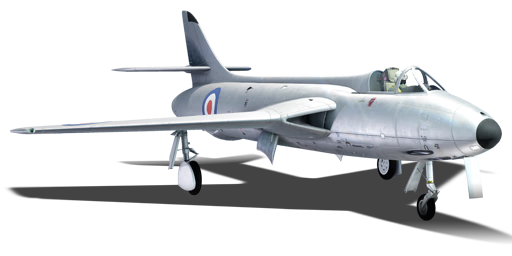



Following the end of WWII, a new British government decided to focus their efforts into rebuilding the nation, under the assumption that another major conflict would not occur for at least a decade. During this time, Air Ministry Specifications were primarily issued for research designs, rather than any military requirements. As a result, at the dawn of the Cold War in the late 1940s, the RAF quickly realised that it was lagging behind in aerial capabilities, and pressed for the development of new fighter aircraft with the latest features, such as swept wings. Alongside the Supermarine Swift, one design that garnered particular interest was the Hawker Hunter. While initially developed as a swept-wing version of the Hawker Sea Hawk, it underwent a number of improvements including replacement of the two Rolls-Royce Nene engines with a single copy of the new, prototype Rolls-Royce Avon engine, which was thinner but also significantly more powerful. The prototype took its first flight in July 1951, and entered service with the RAF in July 1954, replacing the Gloster Meteors, de Havilland Venoms, imported Canadair Sabres, and the Supermarine Swift. Despite initial teething problems with the new engine and airframe, the Hawker Hunter became one of the most successful British post-war jet designs, with almost 2,000 aircraft manufactured in more than 60 variants, and exported to over 20 countries. The final Hunters were finally withdrawn from service with the Lebanese Air Force in 2014.
Introduced in Update 1.53 "Firestorm", the Hunter F.1 is a drastic departure from the playstyles of the jets and props that precede it. Its calling card is its high top speed, coupled with excellent high-speed manoeuvrability and a complement of four powerful 30 mm ADEN cannons on a relatively stable platform, allowing it to swoop in and make short work of unsuspecting opponents, before quickly evacuating from danger. While its low-speed flight characteristics are subpar, maintaining at least 800 km/h at all times will allow the Hunter to fight toe-to-toe with common opponents such as F-86 Sabres and MiG-17s; however, extra care should be taken when facing supersonic opponents and those equipped with air-to-air guided missiles.
flaps
flaps
flaps
brake
| Belt | Belt filling | Armor penetration (mm) at a distance: | |||||
|---|---|---|---|---|---|---|---|
| 10 m | 100 m | 500 m | 1000 m | 1500 m | 2000 m | ||
| AP/HEI-T | 37 | 34 | 22 | 13 | 8 | 5 | |
| AP/HEI-T/AP | 37 | 34 | 22 | 13 | 8 | 5 | |
| HEF-I/HEI-T | 4 | 4 | 4 | 4 | 4 | 4 | |
| AP/HEF-I | 37 | 34 | 22 | 13 | 8 | 5 | |












Flight performance | |
|---|---|
Survivability |
|---|
Weaponry |
|---|